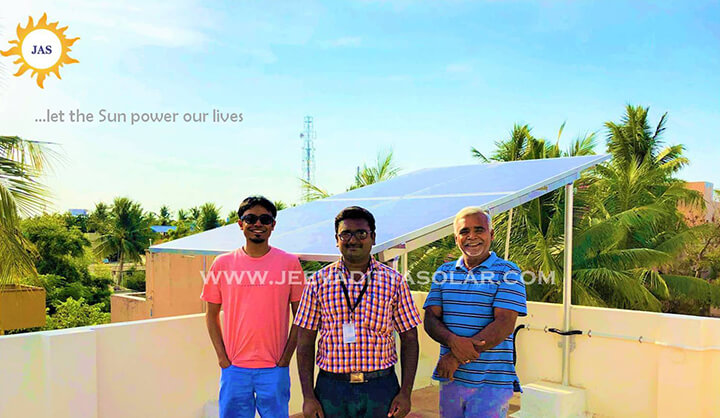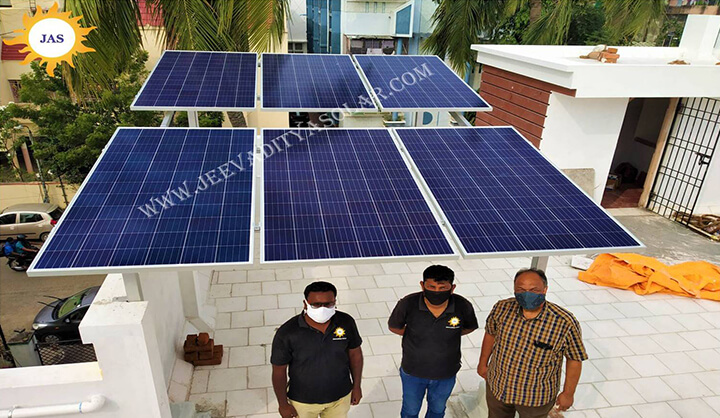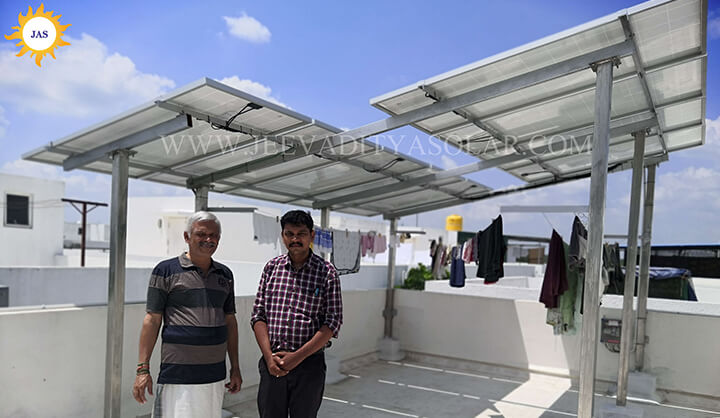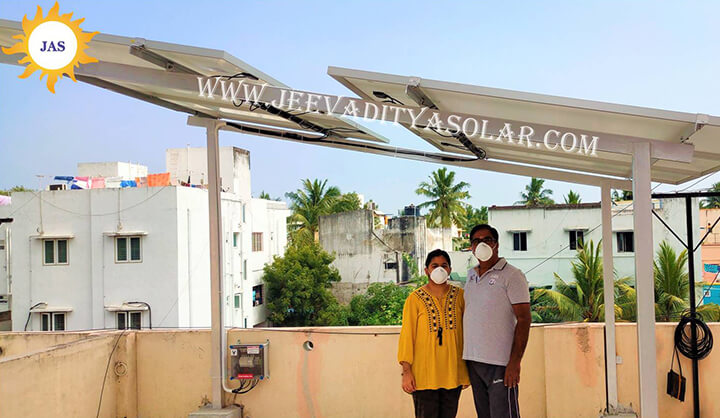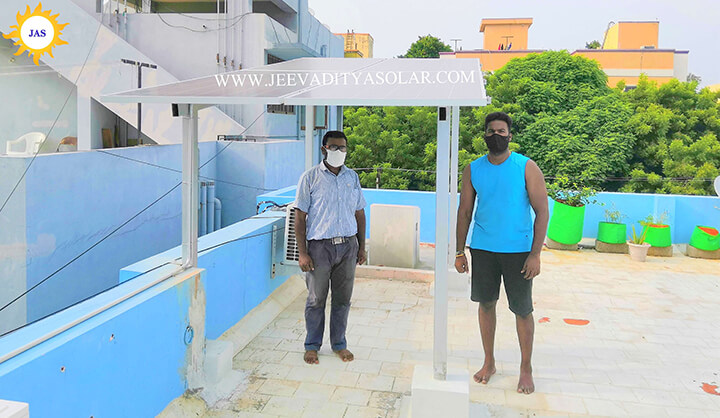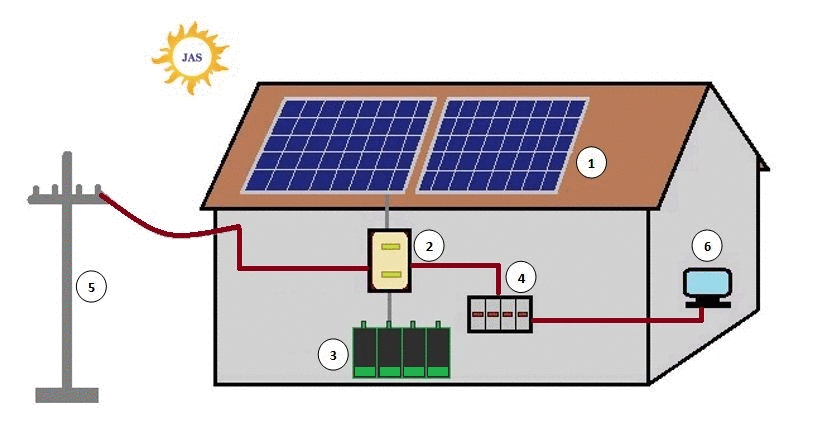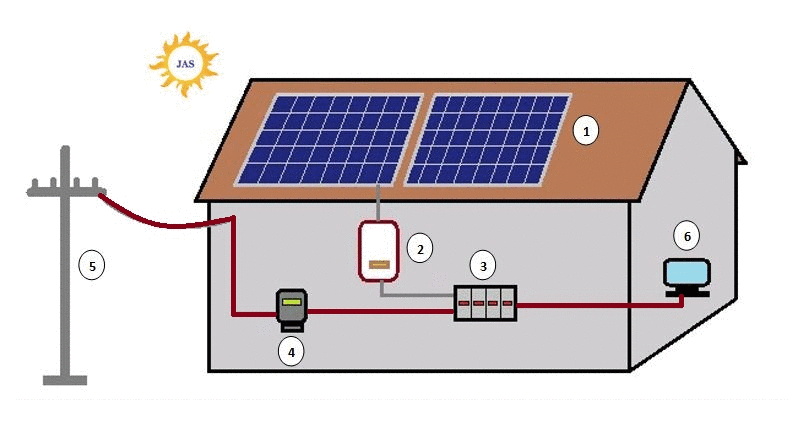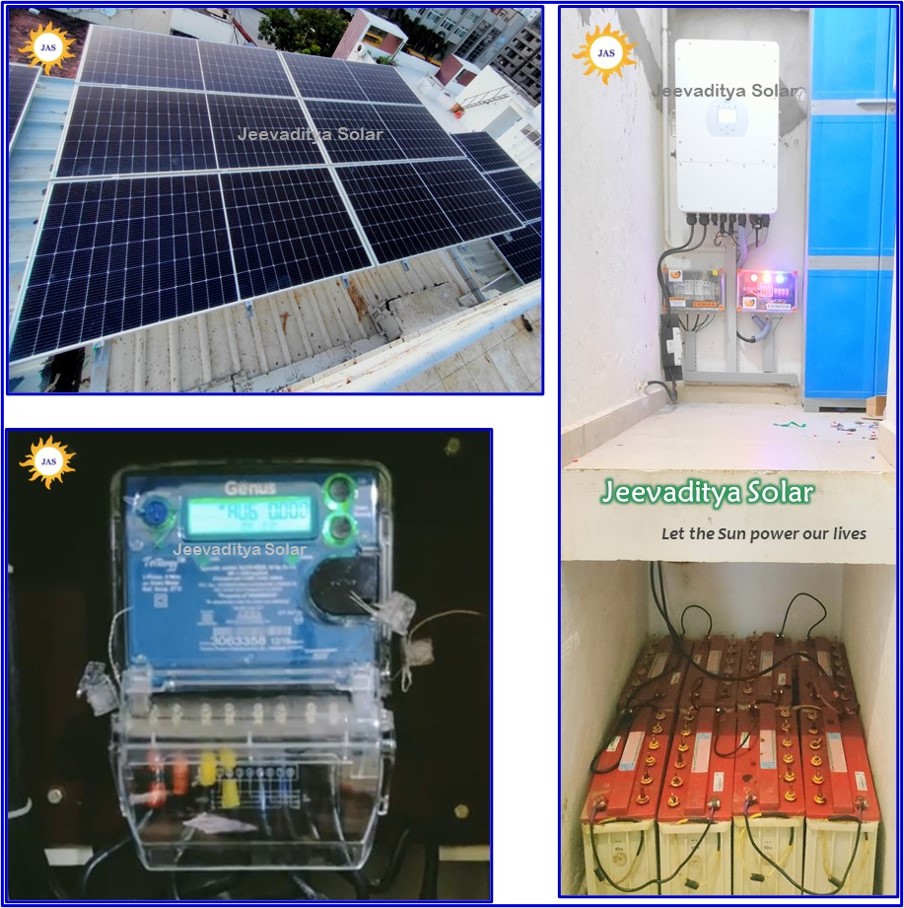Customized to domestic purposes, our home systems are compatible with almost all household electrical appliances like TV, lights, fans, refrigerator, washing-machine, air-conditioner, motors etc. Some types of solar power systems are described below.
Home Solar system
Team Jeevaditya has in-depth knowledge of domestic/residential customer needs. The solar system needs to be designed and installed after accounting for the kind of household appliances, the usage pattern of the domestic customers, site-conditions and the prevailing EB solar policy. Jeevaditya’s solar solutions are customized for these domestic needs, be it Individual-houses, Apartments, Villas, Hostels, Ashrams etc. With enriched industry experience and knowledge specific to Indian households, we are providing an excellent range of Home-Solar-Power-Systems. Be it Off-grid, On-grid, Hybrid or any other combination, we have customised and optimal solar power solutions for all household applications.
Off-Grid Systems for Homes
Offgrid system comes with battery bank and uses grid-power (if available) only as backup. During the day, the solar power generated from solar panels powers the household appliances and the excess power is stored in batteries. The power from the batteries is used at night. Jeevaditya’s off-grid systems are designed for 24/7 power from solar on a sunny day. During rainy days and/or higher than usual electricity usage days, the grid power is used as backup. Its main objective is to provide 24/7 power and also EB bill savings.
The Offgrid solar system is suitable when:
- 24×7 power is required OR
- EB power is not reliable i.e. frequent power cuts or voltage fluctuations
Working Principle
- Day: At daytime, the power from solar panel is used to power the connected appliances and the batteries are charged.
- Night: The inverter automatically switches the connected appliances from solar to batteries at night. The charged batteries power the connected appliances during night.
If more-than-usual power is consumed during the day or if the day has been cloudy, then the battery may drain during the night and reach a low cut-off. The inverter then switches the connected appliances from batteries to grid automatically. This is switched back to solar in the morning. This algorithm ensures optimal convenience and bill savings.
Ongrid Solar Power System for Home
On-grid system does not have batteries and requires a grid for functioning. It is also called a grid-tied system. During the day, the solar power generated from solar panels powers the household appliances and the excess power (if any) is exported to the grid through a net-meter. On-grid systems require a net-meter from EB.
The Ongrid system is suitable when:
- Electricity bill savings is the highest priority for a residence
- EB power reliable, i.e. rare power-cuts and/or voltage-fluctuations
Working Principle
- Day: The solar panel generates electricity during the day. The Ongrid inverter generates output by synchronizing the voltage and frequency values obtained from the grid. The inverter checks for demand from the household loads and powers them. The excess generated power (if any) is fed to the grid via bi-directional net-meter. The electricity (units or kwh) fed to the grid will be recorded as Export.
- Night: At night, power is completely used from the grid. The electricity used by the consumer from the grid will be recorded as Import in the bi-directional meter.
The EB bill will be generated for Net Units = Import – Export. Consumers will pay only for the net units consumed in the meter. This net-metering policy is in effect in Tamilnadu for residences from Oct 2021. This is very beneficial for residences.
The On-grid system will operate only if both grid and solar power are available. In case of power-cuts or high voltage-fluctuations, the On-grid system will shut down (as per regulations). Hence, Ongrid solar is great solution to save household electricity bills if the grid is reliable i.e. rare power-cuts and/or voltage-fluctuations
Hybrid Solar Power System for Home
A hybrid system is a grid-tied system which also includes battery-storage. In some ways, one can call this as a combination of Ongrid and Offgrid systems. While, it is easy to conclude that Hybrid has the advantages of both Ongrid and Offgrid systems, it is not so straightforward. We have to be careful as the Hybrid inverter specifications can vary a lot which changes its workings & benefits accordingly. Jeevaditya’s hybrid solutions are highly customized to ensure each residential customer’s needs are taken care.
Working Principle
- Day: The solar panel generates electricity during the day and stores it in the batteries. After batteries reach 100 percent, the inverter cuts off the Grid Supply and checks for demand from the loads and sends the produced power to the household loads. The excess generated power is fed to the grid via bi-directional net-meter. The electricity (units or kwh) fed to the grid will be recorded as Export. During power-cuts in the day, the hybrid system acts as an Offgrid system and it has various modes of operation depending on the consumer’s needs.
- Night: At night, power is used from battery and grid depending on the Hybrid inverter specifications. The electricity used by the consumer from the grid will be recorded as Import in the bi-directional meter.
The EB bill will be generated for Net Units = Import – Export. Consumers will pay only for the net units consumed in the meter. This net-metering policy is in effect in Tamilnadu for residences from Oct 2021.

